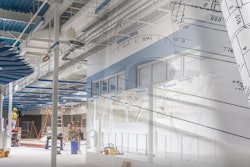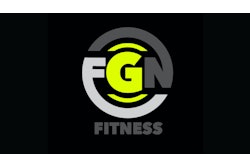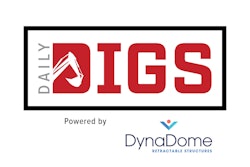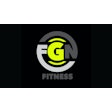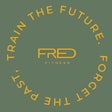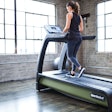Preventive Maintenance and Part Replacement Are Key to Avoiding Costly Repairs
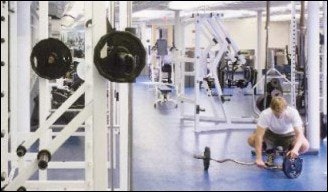
Heavy traffic and constant use make fitness centers prone to wear and tear at a rate much faster than other areas, creating a challenge to keep up with continual maintenance and repair needs. In addition, fitness center users are among the most demanding, expecting equipment to be available and working properly. If it's not, they can quickly degrade into disgruntled customers, or hold you liable if they are hurt because of faulty equipment. Here, efficient repairs are key. While increasing liability concerns mean it's often best to consult a professional or replace older equipment, there are many ways fitness center operators can use preventive maintenance and creative problem-solving to keep major repairs at bay, and equipment and facilities in continuous service.
Most managers make establishing a regular preventive maintenance program the first step. A typical program will be broken into daily, weekly and monthly schedules. Generally speaking, the bulk of daily maintenance involves cleaning. Walls, including those within racquetball courts, should be cleaned with a general household cleaner, and floors should be vacuumed. For hardwood floors common in aerobics rooms and racquetball courts, some maintenance managers recommend damp-mopping with either a 25 percent solution of vinegar or a 6 percent solution of Murphy's Oil Soap. (As water is a wood floor's greatest enemy, care should always be taken to keep moisture to a minimum, even when cleaning.)
Fitness equipment can be cleaned with either a mild soap solution or an antibacterial disinfectant; liquid sprays should be used only in a pinch. One manager even goes out of his way to buy a lemon-scented disinfectant, preferred by his members. Antibacterial disinfectant, diluted to a 10 percent solution, works well for vinyl surfaces, but a mild soap solution will also do the trick. If soap solution is used, some managers recommend a weekly conditioner wash. For vinyl surfaces untouched by perspiration, glass cleaner can also be used. ArmorAll is not recommended, as it can make the vinyl slightly slick and more apt to crack. Clean metal surfaces with a mild detergent or liquid cleaner, and use automotive polish about every three weeks. Any electronic consoles should be handled carefully; never spray liquid directly onto the display. Try to use a dry cloth to wipe the consoles, but if grime remains, wet the cloth before wiping. If there is a persistent spill, dampen the cloth with glass cleaner and rub the area.
Lubrication and adjustments are another major portion of the preventive maintenance schedule, and are generally performed on a weekly basis. Before lubrication, chains should be cleaned with a household cleaning solvent. Because of the pungency of acetone, most fitness center managers now avoid its use, preferring instead to leave chains with persistent grease and grime in solvent overnight, or to simply replace them. Most chains, lubes, wheel gears, connection points and guide rods are best lubricated with lightweight motor or machine oil, generally 30-weight, although 10- to 20-weight oil is preferred by some. White lithium grease is also highly recommended for metal chains, as it can last longer than oil, but lubricant sprays should be avoided. Special lubricants may be necessary for plastic bushings, and mineral oil may be found to be more effective for brass or copper bushings. During the process of lubricating the equipment, be sure to inspect and adjust any movable parts - for example, be sure to check the tension on cables and belts, and tighten all bolts, nuts and screws.
Almost all manufacturers provide manuals with their fitness equipment, or have them available upon request. If these are on-site, fitness center managers are wise to follow their recommendations, not only because they are specific to each particular machine, but because it will help protect against liability. Along with maintenance schedules, these manuals offer instructions for common part replacements and repairs. Parts catalogs can also be a good source for schedules and repair tips, but be wary of catalogs that provide tips aimed only at selling you new parts.
Most manufacturers also provide customer-service phone numbers, and major manufacturers often offer certification courses, such as weekend or weeklong seminars, to provide intricate details on maintaining and repairing their products. By certifying your staff through these courses, you not only gain credibility with the manufacturer (useful if there is a major breakdown after the warranty has run out), but you can receive insight into the specifics of their products, including parts to watch carefully and special repairs that may not be detailed in the manual. At the very least, you should make sure your staff members are properly trained, and that at least two people are trained for every procedure, in case one should be absent when there is an urgent need.
Fitness center operators can also keep themselves in line by maintaining a repair log or history for each machine, recording the date it was purchased, preventive maintenance that was performed, the dates and details of repairs and replacements, amounts spent, and any ongoing concerns or needed materials. Not only do these logs help track any recurring problems common to particular types of machines, or with a particular machine (which may signal the need for its replacement), but some manufacturers may be more likely to work with you, even if the machine's warranty has expired.
Most newer pieces of equipment have a function that will display cumulative information for the machine, such as number of hours in use, number of miles in use, number of floors climbed, number of tons lifted and so forth. This information can be used to supplement the repair log. Some centers also opt to base portions of their schedules on this cumulative information. For example, you can rewax the decks of treadmills every 2,000 miles instead of every month, or perform the three-month maintenance on stair climbers every 600 hours of use. These cumulative measurements can also be useful in tracking the use of equipment on the fitness floor. You may find that particular pieces, such as those located in front of a TV screen, are used more than others. It may be beneficial to rearrange the equipment so that machines in higher use are substituted for machines in lower use - thus spreading the wear and tear among all the machines, rather than focusing it on just a few.
Even the best maintenance schedule and techniques, however, can't prevent repairs from cropping up. Often these are common procedures, most of which are spelled out in detail in the machine's manual: replacing cables and pulleys, inspecting chain links and weight-stack pins for bending or wear, analyzing electrical components and connections, and maintaining proper belt or chain tension by taking up slack as stretching occurs over time. Many times, it is mainly a matter of replacing an old part with a new one, whether it's a frayed cable or a broken console. Many maintenance managers store spare parts for in-demand equipment so repairs can be performed quickly, without waiting for a part to arrive. Always remember to disconnect the power if the machine uses electricity, even if no electrical repairs are being performed. If you will be disconnecting any wires, be sure to mark them first, even if you are sure you will remember which wire goes where. And consider drawing a diagram before disconnecting cables or pulleys.
The main area of breakdown in the fitness center is the cardiovascular equipment. In general, you should refer to the manufacturer's recommendations for repair of these machines, but there are a few notes to keep in mind. Every time you replace the deck on a treadmill, you must replace the belt, but you save a bit by flipping the deck over once to use both sides. Also, rather than replace all the end links that attach the chain to the pedal arm on stationary bikes (at a cost of about $100 per pedal arm), you can usually replace just the two small bearings, available at a local hardware store for less than $10. Using a hammer and wedge, simply pound out the old bearings and pound in the new. (Always check manufacturers' guidelines to ensure that your work doesn't jeopardize the machine's warranty.)
Vinyl seats and benches can be reupholstered in-house, rather than replaced. Some managers cut vinyl to size and simply use heavy-duty staples to hold it in place. At least one health club uses an old Singer sewing machine, heavy-duty thread and mid-grade vinyl with a solid backing to reupholster inhouse. Entertainment systems generally need to be serviced by a professional, but a staff member with electrical experience may be able to troubleshoot or replace frayed wires. In some cases, however, the wires may not be easily accessible. Also, consider steering away wear and tear in weight areas by installing carpeting on walls and under mirrors so clanging weights won't chip surfaces.
There are also common repairs and preventive techniques for a fitness center's less-common amenities. Some racquet courts, for example, have movable plexiglass walls with brackets holding the plungers that you retract to move the wall. Rather than replacing a whole piece of the system, you can order and replace just the plungers, which tend to be the first part to break. At one recreation center, ceiling tiles over the rear wall of the racquetball courts were getting damaged by fast-flying balls. Using the existing channel system, managers replaced the tiles with thin plywood covered with a laminate surface, cut to the same size as the tiles. You should never attempt to modify a structural glass wall, as modifications could impair the engineering, risking the chance of the wall falling into the court.
Climbing walls are also constructed to be all-of-a-piece and should not be modified other than by regular route-setting. Their structure should be inspected by a professional at least every three years. These inspections should include cables, clip-ins, bolts and attachments to structural supports. Between inspections, be sure to visually inspect ropes and anchors. Keep an eye on the ropes if the sheath starts to wear away, and be sure to replace the rope immediately if it becomes frayed. The steel systems for anchors should not wear out, but you must regularly make sure all bolts are tight. Proper route-setting is also key. Be careful to properly thread the bolts for keynuts - tighten them by hand and do not force them. If handholds are tightened too much, you risk breaking them, but if you don't tighten them enough, they will spin.
Managers also offer tips for building maintenance and repair prevention. When installing or replacing carpeting, be sure to purchase glue-down carpet with extra-heavy backing - the difference in backing can add two to three years to the carpet's life. If you have a steam room, you might try reversing the flow on the generator daily to prevent buildup from forming on the heating element. Especially during spring and summer, change the filters on your HVAC units as frequently as once a month, or even once a week, as windborne seeds and pollen can accumulate quickly.
Finally, consider replacing standard fluorescent light ballasts with electric ballasts and substituting an LED system for the traditional two bulbs in emergency exit lights - both alternatives will last much longer. Be aware that some of these repairs, as well as anything involving gas, electricity in wet areas and so forth, are best left to electricians, plumbers or other specialists.
If there are repairs with which you are not comfortable, or do not have the staffing to accomplish, there is also the option of hiring an outside contractor to service fitness equipment. While having a full-time repair person in-house can mean significant savings for the fitness center, largely due to the cost of travel time, outside contracting services can take much of the strain of maintenance and repair off the center's staff. If you decide to go this route, be sure to ask for references, previous experience and proof of insurance, and for the sake of your own liability insurance, be sure to sign a contract with the service provider.
All in all, while most major repairs need to be handled by the manufacturer or a specialist, much can be done to keep operations running smoothly. If you don't already have a maintenance schedule, create one, and then stick to it. It can make all the difference to your equipment, and to your users' satisfaction.


















